The completion of the first GRP A4 series seems to be an ideal occasion to publish some details about GRP and the career of Paolo Groppioni. We have asked the Roman engineer for a small interview.
GS: Hello Mr. Groppioni. Can you first tell us a few general things about GRP. How long has the company existed? Where is the company located? Which GRP instruments have been or are being built?
Paolo Groppioni: The company Grp Synthesizer was founded in 2009 in Rome, when the development of the Grp A8 started. There had been other products in the years before, but they have remained only prototypes, built for fun and for the pleasure I got in playing them for myself – as in the case of the Grp A3 and the Grp A6. At the moment I am occupied with the production of the new Synth Grp A4 which will be completed at the end of October. All of the A4 have already been sold.
GS: Your first product was the GRP A8. Did the instrument meet your expectations? Were you satisfied with the result?
Paolo Groppioni: Referring to the Grp A8 I admit I was satisfied. We were hoping to create a synth with the flexibility of a modular instrument, but which at the same time would be more practical for programming. To do this, we substituted the in/outputs with handy switches. And we were able to maintain high sound-quality.
GS: The very last units of the first batch of GRP A4 are just being completed. Can you see big differences or clear advantages when comparing them to the GRP A8? And are there any clear disadvantages (things that are better on the A8 than on the A4)?
Paolo Groppioni: The Grp A4 was designed as a less expensive synth, without quality reduction. On the contrary, the Grp A4 is more versatile: it offers level controls on both filters and independent filters distortion. In addition, the envelope generators can be looped, and inversion of the modulation phase for each source is possible. So the Grp A4 is more versatile than its big brother.
But the Grp A8 also had its advantages: due to its complex structure (two completely identical voices), it’s possible to play the Grp A8 in poly mode. And there are two fixed filters with 14 bands each. And the number of audio and control modules is higher. So, this synth is undeniably the top-instrument of the Grp production.
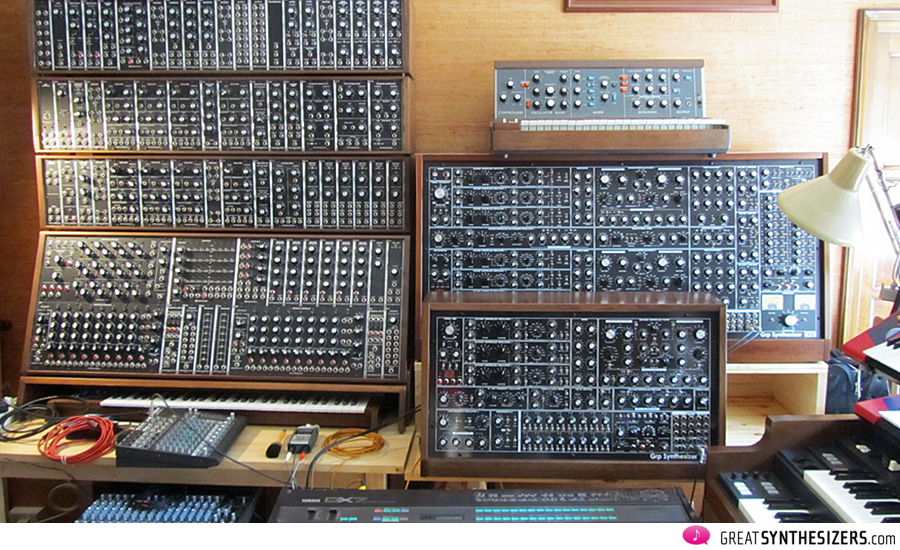
Left to right: the DotCom modular system, the GRP A8 and Minimoog, the GRP A4 prototype. Photo (c) Enrico Cosimi.
GS: Many of the musicians have gotton extremely excited about the GRP sequencer. Are there any plans to construct a stand-alone unit in the near future?
Paolo Groppioni: Yes, there are such plans. It’s very likely that our next acitivies will be concentrated on the development of a stand-alone sequencer with the characteristics derived from the other two synths. At the moment we are determening the ideal size for the customers and whether it is to be a modular system’ s unit or an independent sequencer.
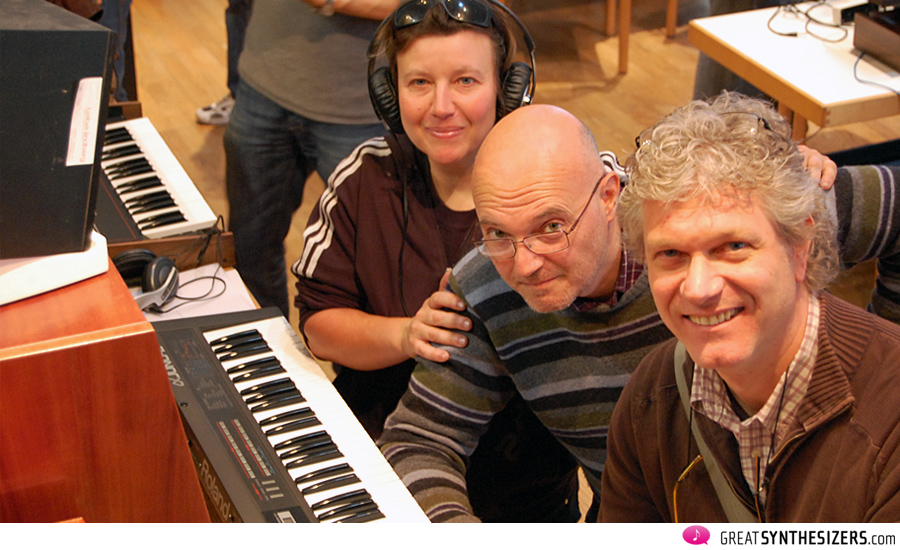
Enrico Cosimi (between the Moog Lady and Paolo Groppioni) contributed many ideas to the A8, and to the sequencer, too.
GS: Are there other instruments in preparation or in planning? A GRP A16, for example?
Paolo Groppioni: An instrument which is bigger than the Grp A8? You’re joking, aren’t you?
GS: A few words about you. What were you trained to do, what do you actually do, are you married, do you have children?
Paolo Groppioni: At the moment, building synths is not my main activity. I work for a prominent Italian company as a Data Center Manager.
I’m married to a very patient woman and we have a 16-year-old son who has been studying the piano for four years now. The first letter from the synth models – A – comes from his name “Alessandro”.
GS: Are you a musician? Do you have a studio? Or is your focus on the technological side of music, like synthesizer production?
Paolo Groppioni: It would not be correct to define myself as a musician. I’ve been playing in local bands for years, but I am autodidact. I’ve been more enchanted with the instruments themselves than with the results I personally can produce on them. I’ve had a passion for electronic music – for the combination of music and electronics – since I was a kid. Somewhere along the way I decided to build my own instruments to use on the stage.
GS: The general economic situation is not very encouraging at the moment. This makes itself felt in the field of electronic music instruments as well. Do you think that the production of a large hardware synthesizer will be more and more difficult in the future?
Paolo Groppioni: Certainly, in the actual crisis the individual markets in many sectors are not encouraging. This goes for music instruments as well, but one advantage of the niche markets is that – because they are niche markets – they suffer less from crises than at the larger consumer market level.
GS: Italy is – along with Japan, the U.S., Germany and a few other countries – among the most innovative manufacturers of electronic musical instruments in the world. Elka, Crumar, Farfisa, General Music … How can it be that these companies have not survived, despite their high-quality products? Can you give us an explanation?
Paolo Groppioni: The Italian economic reality is certainly not to be compared with the American or Japanese, and without official development aid for small cultural initiatives some companies in this sector are behind the eight ball here in Italy.
GS: Finally, is there anything you would wish for your company and / or for the field of electronic music instruments in general?
Paolo Groppioni: I would be happy if electronic music got more attention in Italy. We need seminars and concerts for the general public, not only initiatives organized by a few enthusiasts for private circles. This would certainly give us a boost.
GS: Thanks for the interview. We are looking forward to the next fine GRP products.





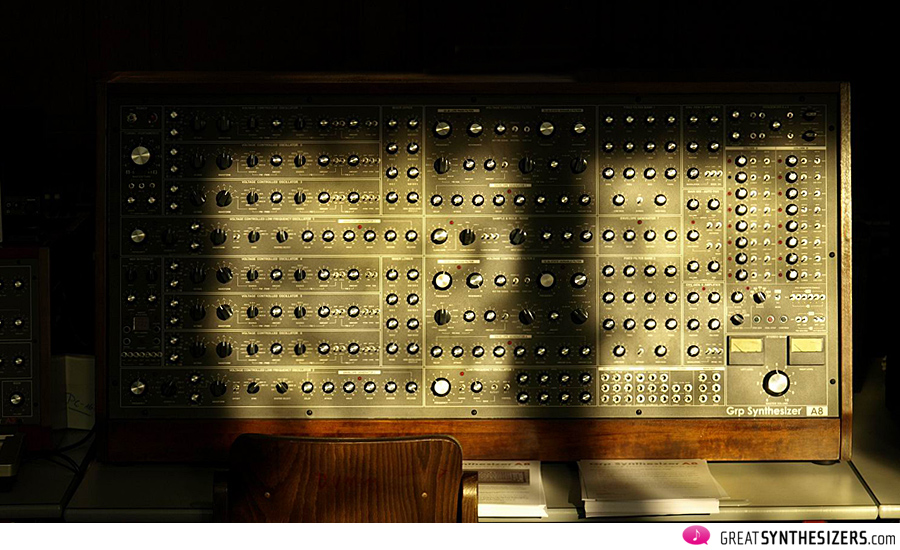
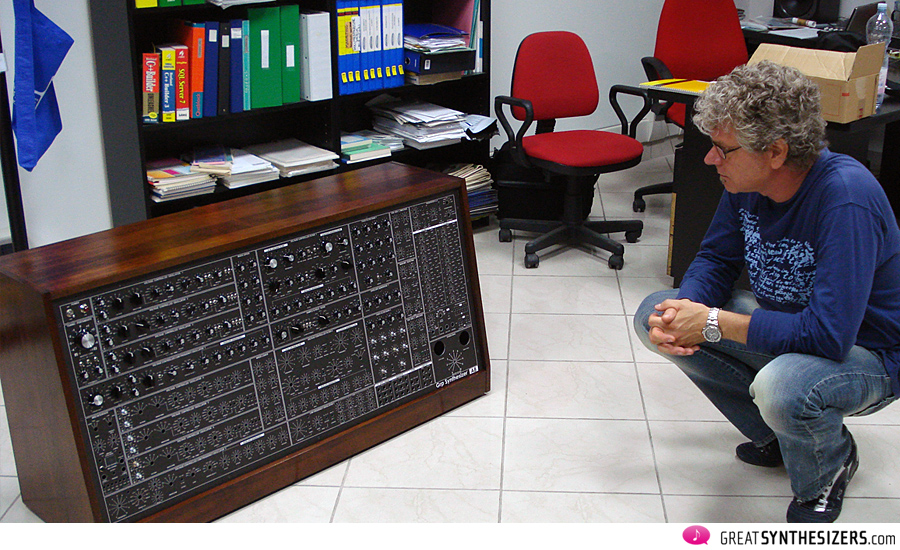
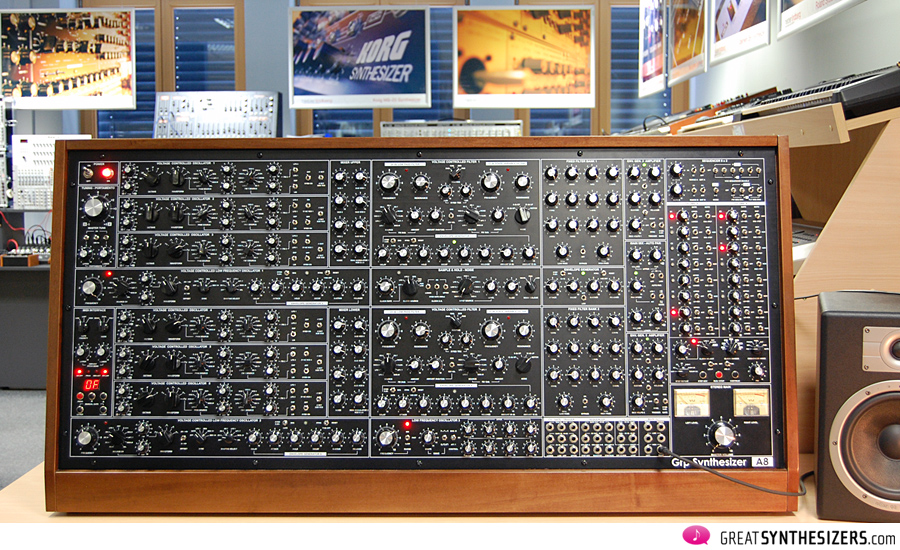
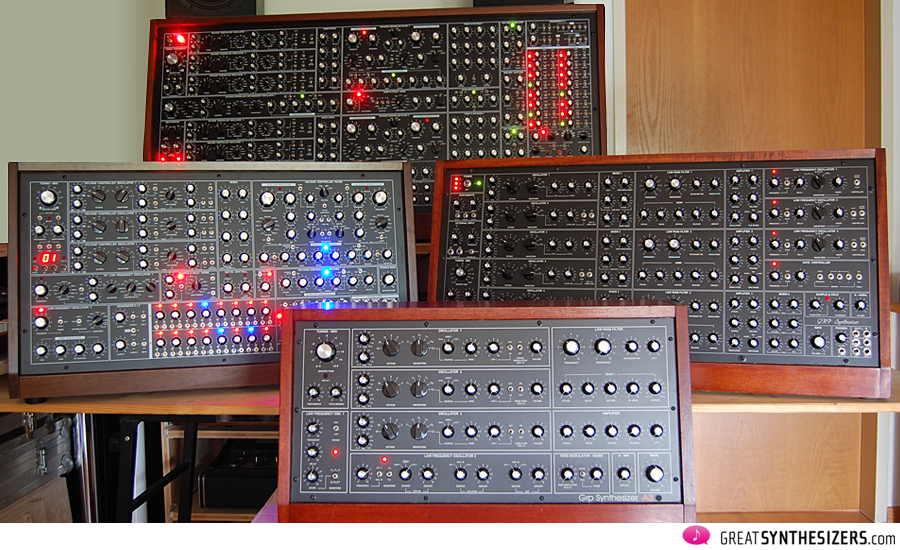
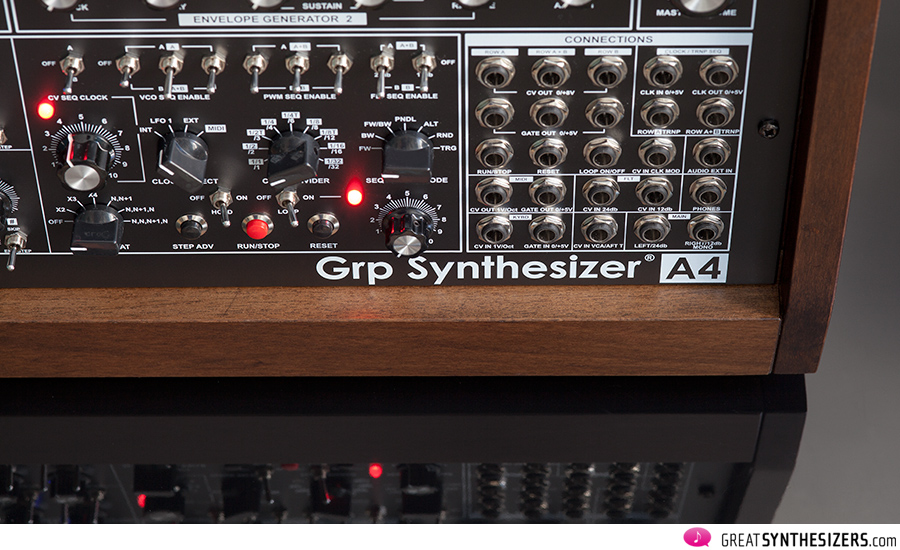

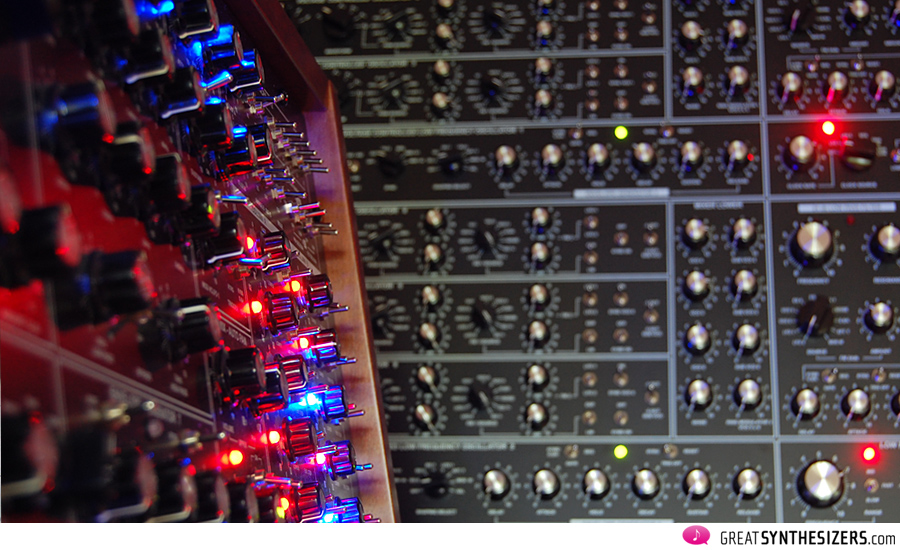
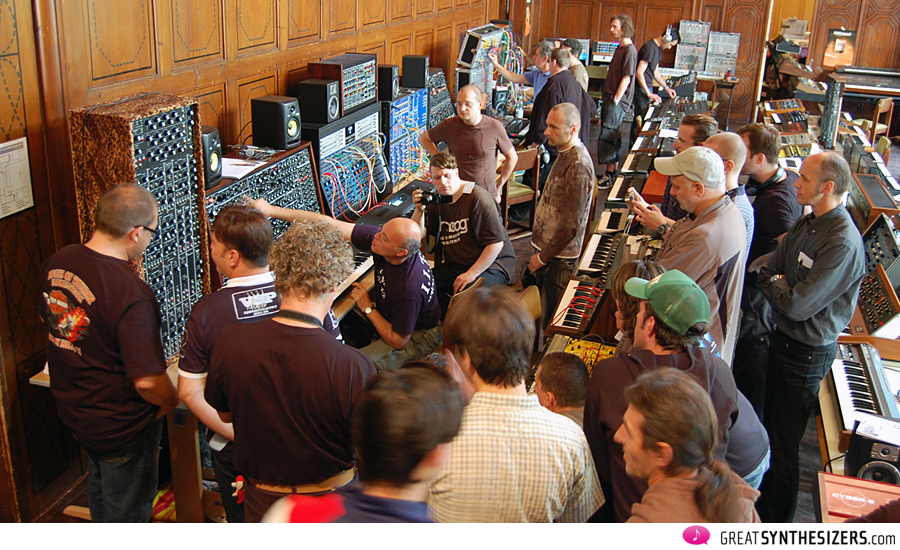
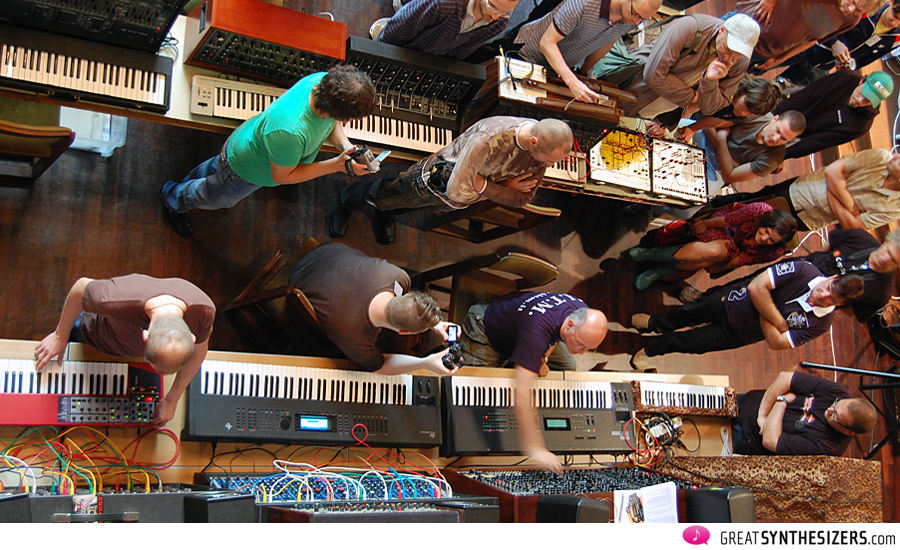

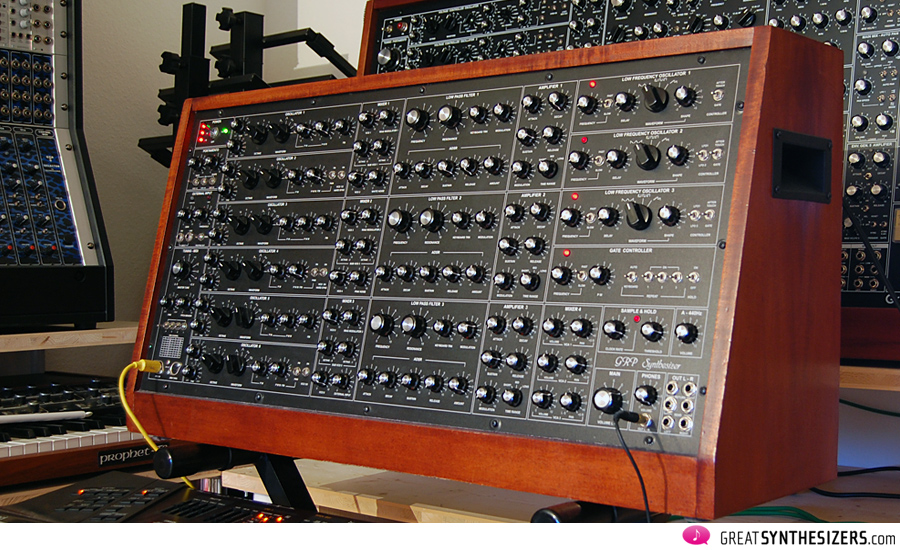

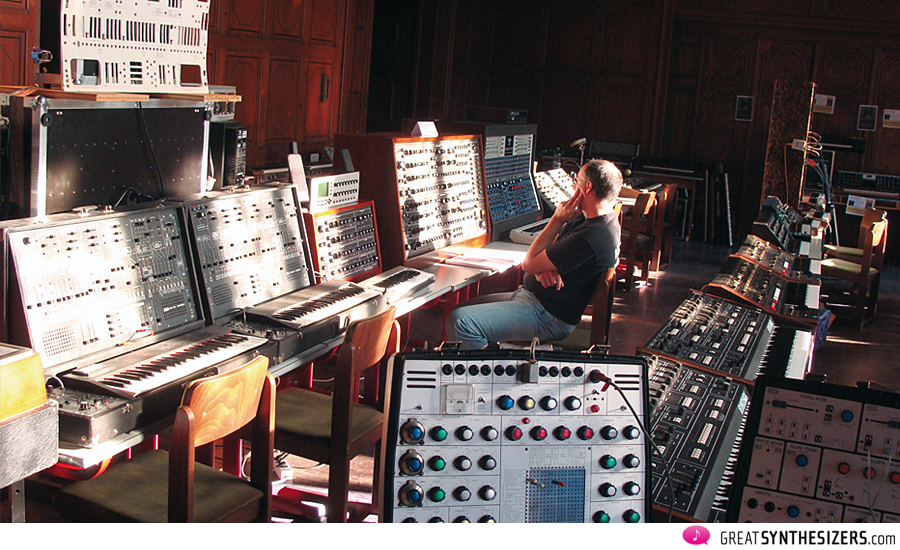
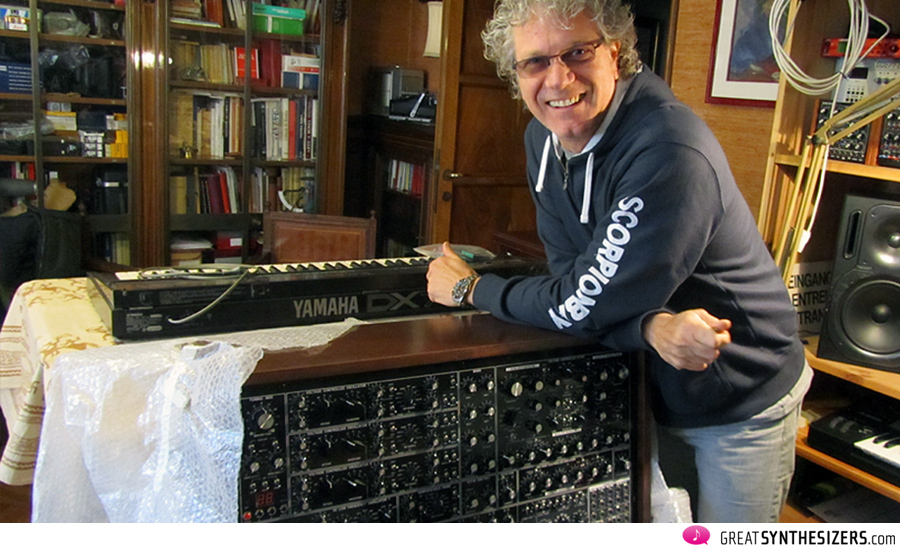

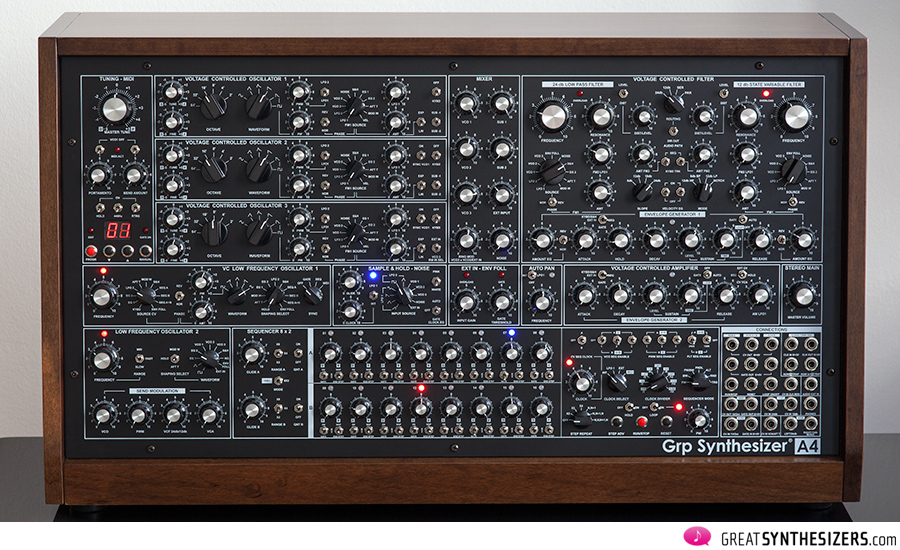

Thanks for this interview , something to add : Paolo is a real gentleman, always replying with precise support and super nice attitude even before being a customer!
Cheers,
Lovely instruments. I wish there was a way to try one out.
Where can i buy one of these GRP synths?
… the A4 can be ordered directly at GRP. Email: info(at)grpsynthesizer.it
I will bring my A4 for the synthfest France (from 30th of march til the 1st of April) in Nantes (France). If you have the opportunity to come, you can try the A4 as long as you want.
… I whish I could participate. Not just to play (and discuss) the A4, but also to meet you … Have a good time at the SynthFest, Laurent!